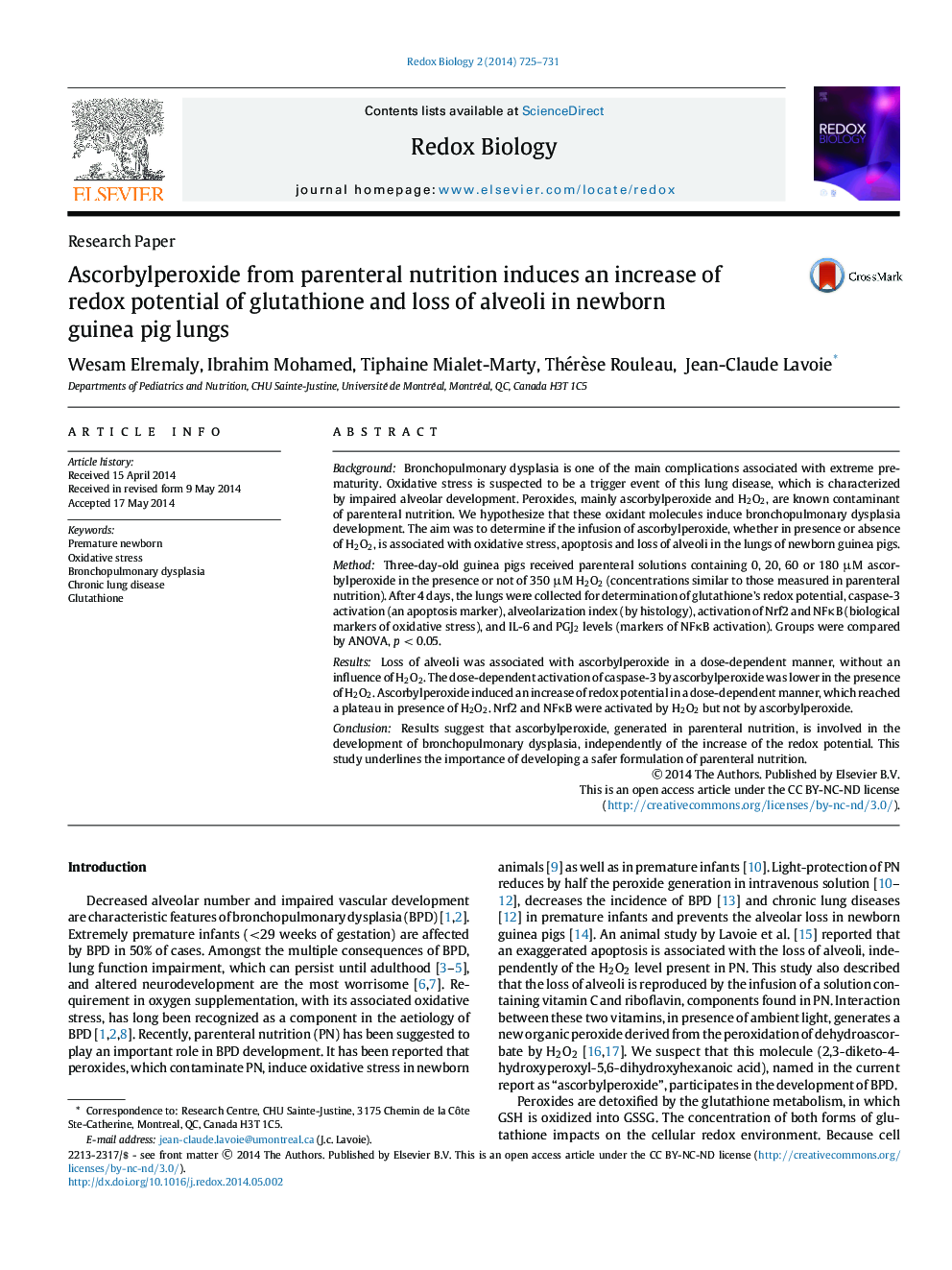| کد مقاله | کد نشریه | سال انتشار | مقاله انگلیسی | نسخه تمام متن |
|---|---|---|---|---|
| 1923054 | 1535848 | 2014 | 7 صفحه PDF | دانلود رایگان |
• Oxidative stress is suspected to induce bronchopulmonary dysplasia.
• We investigate the role of ascorbylperoxide contaminating parenteral nutrition.
• This molecule induces oxidation of redox potential, apoptosis and loss of alveoli.
• The alveolar loss is independent of the redox potential.
BackgroundBronchopulmonary dysplasia is one of the main complications associated with extreme prematurity. Oxidative stress is suspected to be a trigger event of this lung disease, which is characterized by impaired alveolar development. Peroxides, mainly ascorbylperoxide and H2O2, are known contaminant of parenteral nutrition. We hypothesize that these oxidant molecules induce bronchopulmonary dysplasia development. The aim was to determine if the infusion of ascorbylperoxide, whether in presence or absence of H2O2, is associated with oxidative stress, apoptosis and loss of alveoli in the lungs of newborn guinea pigs.MethodThree-day-old guinea pigs received parenteral solutions containing 0, 20, 60 or 180 µM ascorbylperoxide in the presence or not of 350 µM H2O2 (concentrations similar to those measured in parenteral nutrition). After 4 days, the lungs were collected for determination of glutathione's redox potential, caspase-3 activation (an apoptosis marker), alveolarization index (by histology), activation of Nrf2 and NFκB (biological markers of oxidative stress), and IL-6 and PGJ2 levels (markers of NFκB activation). Groups were compared by ANOVA, p < 0.05.ResultsLoss of alveoli was associated with ascorbylperoxide in a dose-dependent manner, without an influence of H2O2. The dose-dependent activation of caspase-3 by ascorbylperoxide was lower in the presence of H2O2. Ascorbylperoxide induced an increase of redox potential in a dose-dependent manner, which reached a plateau in presence of H2O2. Nrf2 and NFκB were activated by H2O2 but not by ascorbylperoxide.ConclusionResults suggest that ascorbylperoxide, generated in parenteral nutrition, is involved in the development of bronchopulmonary dysplasia, independently of the increase of the redox potential. This study underlines the importance of developing a safer formulation of parenteral nutrition.
Figure optionsDownload as PowerPoint slide
Journal: Redox Biology - Volume 2, 2014, Pages 725–731
